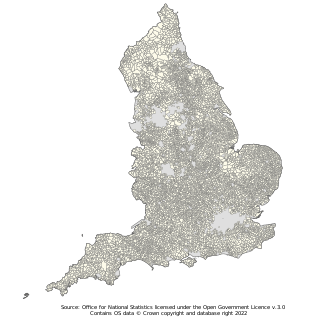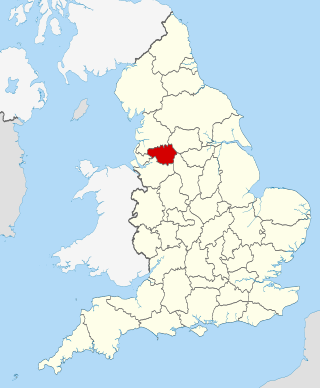
The Greater London Authority (GLA), colloquially known by the metonym City Hall, is the devolved regional governance body of Greater London, England. It consists of two political branches: the executive Mayoralty and the 25-member London Assembly, which serves as a means of checks and balances on the former. Since May 2016, both branches have been under the control of the London Labour Party. The authority was established in 2000, following a local referendum, and derives most of its powers from the Greater London Authority Act 1999 and the Greater London Authority Act 2007.
Local government in Wales is primarily undertaken by the twenty-two principal councils. The councils are unitary authorities, meaning they are responsible for providing local government services within their principal area, including education, social work, environmental protection, and most highway maintenance. The principal areas are divided into communities, most of which have an elected community council. The services provided by community councils vary, but they will typically maintain public spaces and facilities. Local councils in Wales are elected; the most recent local elections in Wales took place in 2022, and the next are due to take place in 2027.

A parish council is a civil local authority found in England, which is the lowest tier of local government. They are elected corporate bodies, with variable tax raising powers, and they carry out beneficial public activities in geographical areas known as civil parishes. There are about 10,480 parish and town councils in England. Parish councils may be known by different styles, they may resolve to call themselves a town council, village council, community council, neighbourhood council, or if the parish has city status, it may call itself a city council. However their powers and duties are the same whatever name they carry.

Local government in England broadly consists of three layers: civil parishes, local authorities, and regional authorities. Every part of England is governed by at least one local authority, but parish councils and regional authorities do not exist everywhere. In addition, there are 31 police and crime commissioners, four police, fire and crime commissioners, and ten national park authorities with local government responsibilities. Local government is not standardised across the country, with the last comprehensive reform taking place in 1974.

Sheffield City Council is the local authority for the City of Sheffield, a metropolitan borough with city status in South Yorkshire, England. The council consists of 84 councillors, elected to represent 28 wards, each with three councillors. It is currently under no overall control, with Labour, the Liberal Democrats and the Green Party each holding chair positions in a proportionate number of committees.

Leeds City Council is the local authority of the City of Leeds in West Yorkshire, England. It is a metropolitan district council, one of five in West Yorkshire and one of 36 in the metropolitan counties of England, and provides the majority of local government services in Leeds. It has the second-largest population of any council in the United Kingdom with approximately 800,000 inhabitants living within its area; only Birmingham City Council has more. Since 1 April 2014, it has been a constituent council of the West Yorkshire Combined Authority.

Bristol City Council is the local authority of Bristol, England. The council is a unitary authority, and is unusual in the United Kingdom in that its executive function is controlled by its directly elected mayor. Bristol has 34 wards, electing a total of 70 councillors.

Local authority areas in England typically have an executive leader and a cabinet selected from the local council, similar to how the national prime minister and cabinet are selected from Parliament. In contrast, residents of some areas, or groups of areas known as combined authorities, directly elect the executive mayors of their local government.

Reading Borough Council, formerly known as Reading Corporation, is the local authority for Reading in the county of Berkshire, England. Reading is a unitary authority with borough status. As a unitary authority the council has the powers of a county council and district council combined. Berkshire is purely a ceremonial county, with no administrative responsibilities.

The Local Government Act 2000 (c.22) is an Act of the Parliament of the United Kingdom that reformed local government in England and Wales. Its principal purposes are:
Overview and Scrutiny is a function of local authorities in England and Wales. It was introduced by the Local Government Act 2000 which created separate Executive and Overview and Scrutiny functions within councils.

Midlothian Council is the local authority for Midlothian, one of the 32 council areas of Scotland, covering an area immediately south of the city of Edinburgh. The council is based in Dalkeith. Since the last boundary changes in 2017, eighteen councillors have been elected from six wards.

Telford and Wrekin Council is the local authority of Telford and Wrekin in Shropshire, England. It is a unitary authority, having the powers of a non-metropolitan county and district council combined. The district of Telford and Wrekin was granted borough status in 2002, though the council does not ordinarily include "Borough" in its name.

The Greater Manchester Combined Authority (GMCA) is a combined authority for Greater Manchester, England. It was established on 1 April 2011 and consists of 11 members; 10 indirectly elected members, each a directly elected councillor from one of the ten metropolitan boroughs that comprise Greater Manchester, together with the directly elected Mayor of Greater Manchester. The authority derives most of its powers from the Local Government Act 2000 and Local Democracy, Economic Development and Construction Act 2009, and replaced a range of single-purpose joint boards and quangos to provide a formal administrative authority for Greater Manchester for the first time since the abolition of Greater Manchester County Council in 1986.

Medway Council is the local authority of Medway in Kent, England. It is a unitary authority, having the powers of a non-metropolitan county and district council combined.

The Mayor of Bristol is the head of government of Bristol and the chief executive of the Bristol City Council. The mayor is a directly elected politician who, along with the 70 members of Bristol City Council, is responsible for the strategic government of the city of Bristol, England. The role was created after a local referendum held on 3 May 2012, which followed the passage of the Localism Act 2011. 41,032 voted for an elected mayor and 35,880 voted against, with a turnout of 24%. An election for the new post was held on 15 November 2012.

Northampton Borough Council was the borough council and non-metropolitan district responsible for local government in the large town of Northampton in England. In 2021 the council was abolished and succeeded by West Northamptonshire Council; a unitary authority, and the Northampton Town Council, a parish council.

The Cities and Local Government Devolution Act 2016 is an Act of the Parliament of the United Kingdom designed to introduce directly elected mayors to combined local authorities in England and Wales and to devolve housing, transport, planning and policing powers to them. The bill was introduced to the House of Lords by Baroness Williams of Trafford, the Parliamentary Under Secretary of State for Communities and Local Government, on 28 May 2015.

The Douglas City Council is the local elected authority for Douglas, the capital city of the Isle of Man and one of the 17 parishes that run local services on the island. It is the largest local authority, with 12 elected councillors representing the city.

Brisbane City Council (BCC) is the democratic executive local government authority for the City of Brisbane, the capital city of the state of Queensland, Australia. The largest City Council in Australia by population and area, BCC's jurisdiction includes 26 wards and 27 elected councillors covering 1,338 km2 (517 sq mi). BCC is overseen by the Lord Mayor of Brisbane, Adrian Schrinner, and the Council of Brisbane and the Civic Cabinet. The council's CEO is Colin Jensen, supported by EO Ainsley Gold.

















